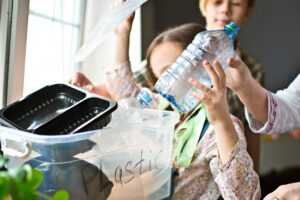In a world increasingly aware of environmental issues, reducing plastic usage has become a vital goal for many. If you’re a beginner looking to embrace a plastic-free lifestyle, you’re taking a commendable step toward a healthier planet. Here’s a comprehensive guide to help you start this rewarding journey.
Understanding the Impact of Plastics
Plastics are ubiquitous in our daily lives, but their environmental impact is profound. From polluting oceans to harming wildlife, the consequences of plastic waste are severe. By understanding these impacts, you can find motivation to reduce your plastic footprint.
Step 1: Educate Yourself
Knowledge is power. Begin by educating yourself about the different types of plastics and their effects on the environment. Watch documentaries, read articles, and follow eco-friendly blogs to stay informed. Awareness is the first step toward meaningful change.
Step 2: Start Small
Transitioning to a plastic-free lifestyle doesn’t happen overnight. Start with small, manageable changes:
- Reusable Shopping Bags: Swap single-use plastic bags for reusable cloth bags.
- Water Bottles: Invest in a stainless steel or glass water bottle.
- Produce Bags: Use mesh or cloth bags for fruits and vegetables instead of plastic ones.
These simple swaps can significantly reduce your plastic use and set the foundation for bigger changes.
Step 3: Reduce Single-Use Plastics
Single-use plastics are one of the biggest contributors to plastic pollution. Here’s how you can cut them out:
- Straws: Say no to plastic straws. Use metal, glass, or bamboo alternatives.
- Cutlery: Carry a set of reusable cutleries for meals on the go.
- Packaging: Choose products with minimal or no plastic packaging. opts for glass, metal, or paper alternatives.
Step 4: Embrace Reusables
Invest in reusable products that can replace their disposable counterparts:
- Containers: Store food in glass or stainless-steel containers.
- Cups: Use a reusable coffee cup instead of disposable ones.
- Wraps: Replace plastic wrap with beeswax wraps or silicone lids.
Reusables not only reduce plastic waste but also save you money in the long run.
Step 5: DIY Solutions
Creating your own products can be fun and rewarding. Here are some ideas:
- Cleaning Products: Make natural cleaning solutions using vinegar, baking soda, and essential oils.
- Personal Care: DIY toothpaste, deodorant, and lotions using simple, natural ingredients.
These homemade solutions are often healthier and more sustainable than store-bought versions.
Step 6: Shop Mindfully
Make conscious choices when shopping:
- Eco-Friendly Brands: Support brands committed to sustainability and plastic-free packaging.
- Farmers’ Markets: Buy fresh, unpackaged produce from local farmers’ markets.
- Bulk Stores: Purchase dry goods, spices, and other items in bulk to minimize packaging.
Mindful shopping helps reduce waste and supports a circular economy.

Step 7: Proper Disposal
Recycling and composting are essential components of a plastic-free lifestyle:
- Recycle Correctly: Familiarize yourself with local recycling guidelines to ensure proper disposal.
- Compost: Compost organic waste to reduce landfill contributions and create nutrient-rich soil.
Proper disposal practices prevent waste from harming the environment.
Step 8: Spread the Word
Share your journey with others to inspire and educate:
- Social media: Document your progress on social media to raise awareness.
- Community: Join local groups or online forums focused on sustainability to exchange tips and support.
By spreading the word, you can create a ripple effect and encourage others to join the movement.
Step 9: Be Patient and Persistent
Transitioning to a plastic-free lifestyle takes time and effort. It’s important to:
- Accept Imperfection: Don’t be too hard on yourself if you slip up. Focus on progress, not perfection.
- Stay Motivated: Keep reminding yourself of the positive impact your efforts are making.
Persistence is key to achieving long-term change.
Step 10: Advocate for Change
Support policies and initiatives aimed at reducing plastic waste:
- Petitions: Sign petitions advocating for plastic bags and stricter regulations.
- Local Initiatives: Participate in local clean-up events and sustainability workshops.
Advocacy amplifies your efforts and contributes to broader societal change.
Conclusion
Living plastic-free as a beginner may seem challenging, but with commitment and small, consistent steps, it’s entirely achievable. By reducing your plastic use, you contribute to a healthier environment and inspire others to do the same. Start your plastic-free journey today and be part of the solution for a sustainable future.
